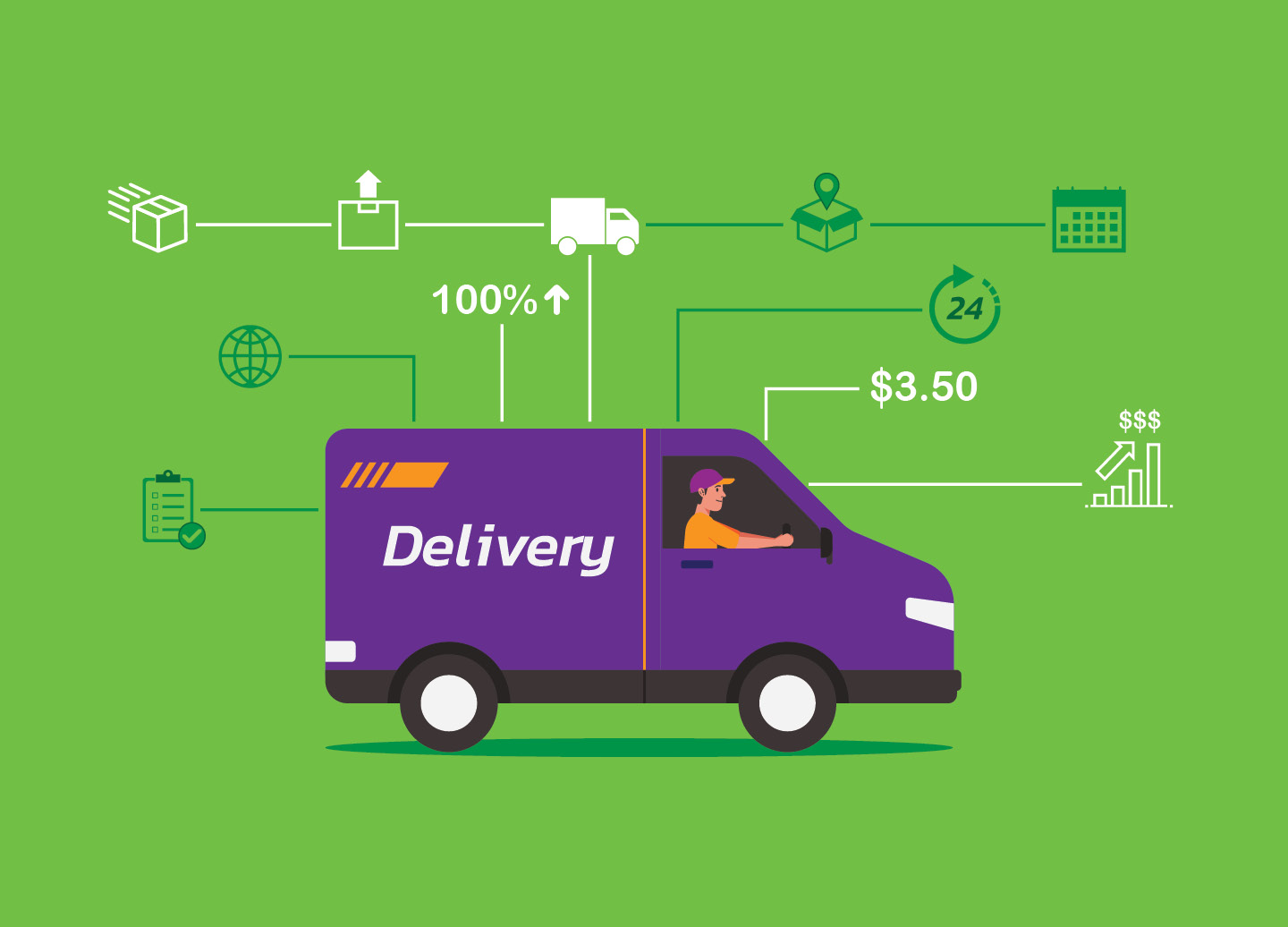Hear from ProShip shipping experts for how your shipping costs will be affected by UPS’s new surcharges.
UPS has officially followed suit and announced increases for their peak surcharges. These increases are tiered with the first round going into effect on July 4th, 2021 and the second round on October 3rd, 2021, ending on January 15th, 2022.
Here are the highlights:
July 4, 2021 – October 2, 2021
- The Additional Handling peak surcharge will increase from $3.00 to $3.50 per package and will be applicable to all U.S. domestic, U.S. import, and U.S. export shipments, for qualifying customers who have shipped more than 1,000 total packages, or more than 10 packages that require Additional Handling during any week following February 2020.
- The Large Package peak surcharge will increase from $31.45 to $40.00 per package and will be applicable to all U.S. domestic, U.S. import, and U.S. export shipments, for qualifying customers who have shipped more than 1,000 total packages, or more than 10 packages that require Additional Handling during any week following February 2020.
October 3, 2021 – January 15, 2022
- The Additional Handling peak surcharge will increase from $3.50 to $6.00 per package and will be applicable to all U.S. domestic, U.S. import, and U.S. export shipments, for qualifying customers who have shipped more than 1,000 total packages, or more than 10 packages that require Additional Handling during any week following February 2020.
- The Large Package peak surcharge will increase from $40.00 to $60.00 per package and will be applicable to all U.S. domestic, U.S. import, and U.S. export shipments, for qualifying customers who have shipped more than 1,000 total packages, or more than 10 packages that require Additional Handling during any week following February 2020.
- The Over Maximum Limits peak surcharge will be $250.00 per package and will be applicable for all U.S. domestic, U.S. import, and U.S. export shipments.
Miscellaneous
- The current $.30 per package peak surcharge applying to certain UPS Ground Residential and UPS SurePost packages, for all U.S. domestic shipments, for qualifying customers who have shipped more than 25,000 packages during any week following February 2020 will remain unchanged through October 30, 2021.
- Effective October 31, 2021 through January 15, 2022, a volume-based peak surcharge will apply to certain UPS Air Residential, UPS Ground Residential, and UPS SurePost packages, for all U.S. domestic shipments, for qualifying customers who have shipped more than 25,000 packages during any week following February 2020. Peak surcharge amounts range from $1.15 to $5.15 for UPS Ground Residential and UPS SurePost and range from $2.15 to $6.15 for UPS Next Day Air and other Air Residential.
Interestingly enough, FedEx did not increase their oversize charge during their recent announcement of peak surcharge increases, while UPS is happy to push the large packages to other carrier networks with their oversize charge jumping to $60.00 per package.
Overall, shippers should be prepared for an expensive peak 2021, especially larger residential-shipping customers who have had some substantial growth over the past several years. Looking back at 2020, retailers heard customer complaints over late or slow deliveries and expensive shipping costs.
Keys for parcel shipping success during peak season.
So how can enterprise-level brands with thousands of packages shipping this peak season prepare for peak 2021?
1. Go Multi-Carrier.
ProShip has been preaching multi-carrier shipping strategies since the start of the pandemic and has seen the proof that an expanded shipping network of multiple carriers will help manage capacity. Now is the time to onboard carriers to avoid the congested shipping hubs of major carriers. Most importantly, finding the right carrier mix to balance your contracted minimum spend and the volume shipping thresholds set by the carriers is the solid base for your peak season preparations. [Here’s Why: Single-Carrier Parcel Shipping Strategies are Dead]
2. Employ Omnichannel Fulfillment Strategies.
With the ultimate goal of finding the shortest possible time for a package to be in a carrier network, top retailers need to expand their number of product origin points, whether that is additional Distribution Centers, Ship-From-Store, Manufacturing Vendors, or Third Party Logistics. If brands have omnichannel shipping capabilities, they will have the flexibility to diversify their carrier mix with additional carriers as well as multiple avenues for their increased capacity. With these other fulfillment sources in their supply chain, they are also decreasing the time in transit and the overall cost of shipping the package.
3. Utilize Parcel Rate Shopping.
The number of surcharges from all carriers – national and regional – can feel overwhelming. The right multi-carrier shipping software has the depth to see all these surcharges and the flexibility to make automated changes based on the capacity you have available. Rate Shopping allows retailers to choose the most time and/or cost-efficient transit method to get packages out the door. Shippers can choose from basic, time in transit, or advanced date shopping to meet customer’s growing shipping expectations. [Learn more: Be the Gold Standard: How Advanced Rate Shopping Can Transform Your Delivery Strategy]
Overall, having a solid carrier mix, omnichannel fulfillment strategies, and automated software features in combination with a top-tier multi-carrier shipping software will put high-volume brands in a better position for the upcoming peak season. And with both brown and purple national carriers defending surcharges as necessary to deal with their elevated costs, shippers should almost expect these surcharges and make these recommended changes as soon as possible to adapt to their shipping needs.
Tony Verrill, Director of Enterprise Sales at ProShip, leaves shippers with a warning, “Get out your checkbook or have a multi-carrier plan to combat these surcharges through other services. Rate shopping to ensure cost-efficiency across carrier services for each delivery is key to ensuring every shipment is optimized for cost and customer delivery expectations.” He continues, “Those who have made investments for Ship-from-Store and dynamic order routing optimization with OMS solutions will ride this wave the smoothest.”
Still have more peak questions? Join us at a Shippers Only: Parcel Shipping Q&A during ProS Who Know 2021 and connect with a panel of experts to ask your burning questions about peak. Register now!
Learn more…

 Back to Blog
Back to Blog






